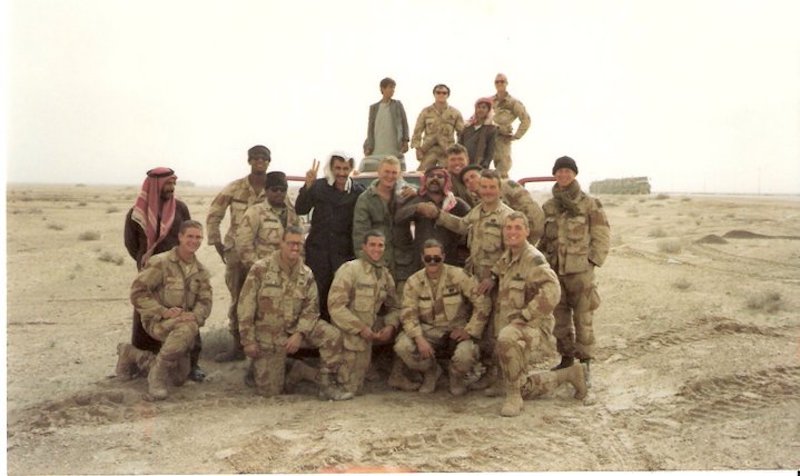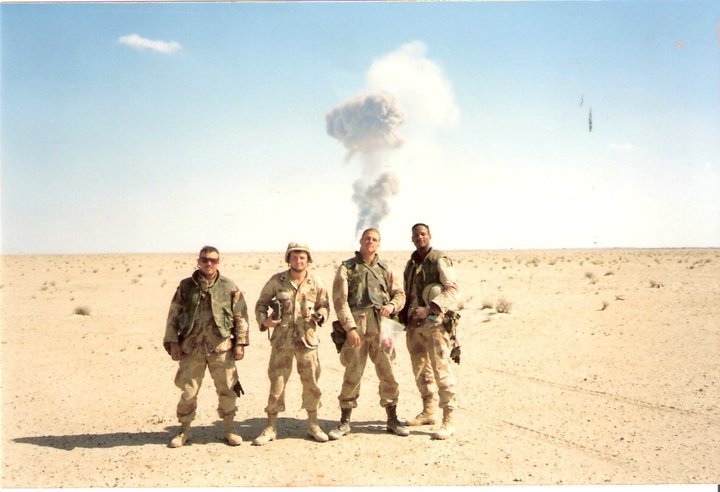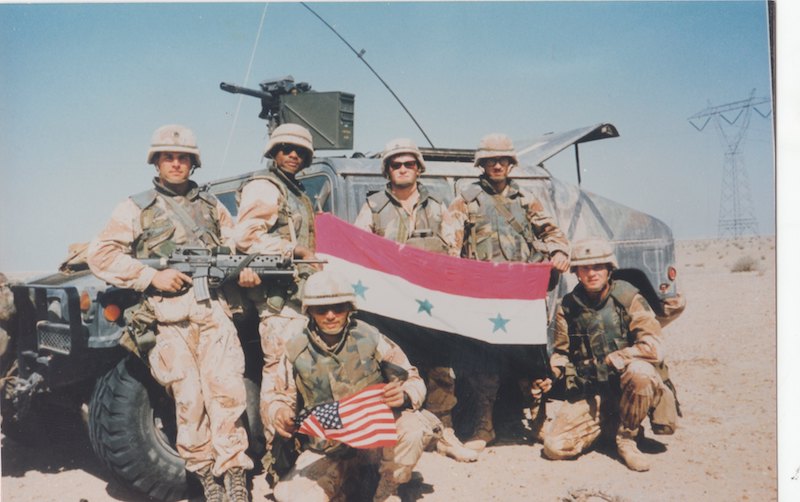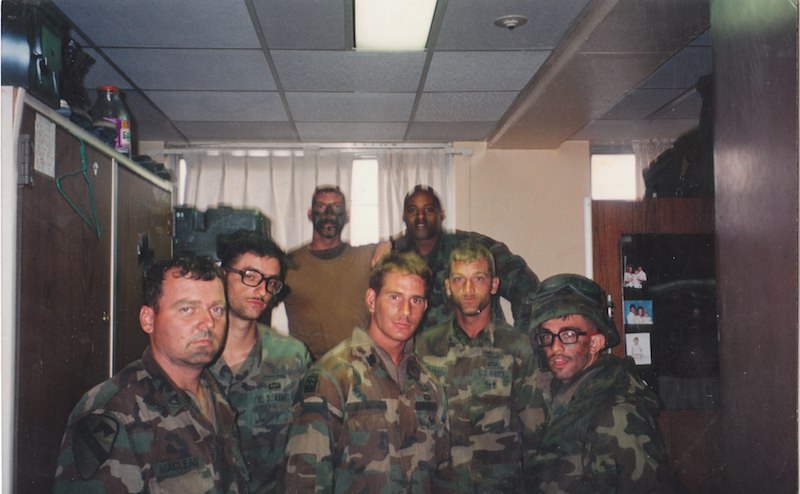Preface
“Punch them in the gut first. Get it out of the way. Then tell them what to do, and go from there.”
Jimmy Hoffa: circa October 1971, New Jersey Federal Penitentiary1
My grandfather was Edward Grady Patin Senior, famous in the 1960’s and 70’s as the Baton Rouge Teamster leader who was freed from jail by Bobby Kennedy in exchange for infiltrating international Teamster president Jimmy Hoffa’s inner circle; my grandfather’s surprise testimony in 1964, ten months after Bobby’s big brother, President John F. Kennedy, was shot and killed. Since my grandfather’s funeral in 1990, I’ve known he was involved in President Kennedy’s assassination, but I didn’t know all the details or with whom he worked, or how investigators overlooked his role for sixty years.
To this day, there’s mostly heresy about what happened to Hoffa and Kennedy, and most people seem financially or ideologically motivated to tell their version of history. In the summer of 2019, Martin Scorsese’s 3 hour, 29 minute opus about Hoffa’s demise, The Irishman, opened in theaters. Investors spent $257 Million making the film, and it starred all of the biggest names actors, many of whom had worked with Scorcesse in his gangster films over the previous few decades. Robert DeNiro, Al Pacino, Joe Pesci, Ray Ramona, and many more viewer magnets stared in The Irishman. which suggested it would explain Teamster president Jimmy Hoffa’s famous 1975 vanishing. In this version, the film says he was killed by a Teamster leader and mafia hitman, Frank “The Irishman” Sheenan, based on his 2004 memoir, “I Heard You Paint Houses.” To paint houses was mafia lingo for painting walls red with spattered blood, and Frank says he painted a suburban Detroit home red with Hoffa’s blood on 30 July 1975; he also implies the mafia leaders with whom he worked were involved in President Kennedy’s assassination.
What stuck in my mind was from before The Irishman was filmed, the burly actor Craig Vincent called my family to research my grandfather, who Hoffa described as “Edward Grady Partin was a big, rugged guy who could charm a snake off a rock.” We called him Big Daddy, and Craig’s role was modified to become “Big Eddie” Partin, matching Craig’s northeaster Italian accent. At the time, my uncle Kieth Partin was still president of Teamsters Local #5, and Aunt Janice ran the Partin family genealogy website (it’s a family business; Jimmy Hoffa’s son, James R. Hoffa Junior, was president of the International Brotherhood of Teamsters in 2019, and Uncle Keith followed Uncle Doug in leading the Baton Rouge Teamsters after my grandfather passed). Craig asked me to help him understand the personality traits that led people like Hoffa, Bobby Kennedy, FBI to trust him and to be intimidated by him. It’s more than just brute size, and Craig wanted to tap into it. Like all of the few people who remember Big Daddy, especially those of us who were at his funeral in 1990, we couldn’t answer Craig’s question concisely.
Craig’s part in The Irishman was so simplified it only garnered about five minutes in the final cut, but it got me thinking: how do you characterize a person like Big Daddy? He makes up almost a third of all books about Hoffa, and was a focal point of at least one chapter in The Irishman book that was omitted from the film, because his role was complicated and not understood by people still alive. During the 2020-2022 Covid-19 pandemic that followed The Irishman, I decided to write a memoir to describe what my grandfather was like.
The story centers around my grandfather’s funeral on 16 March 1990, my senior year of high school and two weeks after my final wrestling match; who attended tells you more about him than I could in an entire book. A year later, after trading my wrestling team for an army team, I was in the middle of the first Gulf war, and I link that into what I learned about my grandfather. A lot of the story is harsh, and metaphors are more fun to write and read than what really happened. I make a few jokes, and whether funny or not, they are just jokes: appropriate for the characters in this book, and not meant to offend anyone other than the person I call a dumbass, asshole, or jerk.
This story isn’t about my service, but I’d be a jerk if I didn’t begin any memoir I by acknowledging my teammates from the 82nd Airborne Division, which also tells you about my mindset during Big Daddy’s funeral. In 1989, when Big Daddy was sick and dying, I joined the 82nd Airborne at 16 years old, possible because I was emancipated by a Louisiana judge and allowed to sign my own contracts. I was on the delayed entry program, because the army required a high school diploma to begin basic training, and I had just been voted as my high school wrestling team co-captain. In my mind, I wanted to join the best unit I could and see how it stacked up to wrestling.
This is what I knew of the 82nd then, which isn’t too different than I know now. The 82nd Airborne is called The All Americans, America’s Guard of Honor, and the quick-reaction force of American presidents, and that’s what first cued me into them. At the time, and because of Bobby Kennedy and FBI director J. Edgar Hoover, my grandfather was dubbed an “all-American hero” in national media, and the term “All American” was in Baton Rouge’s culture because the famous football film, “Everybody’s All American,” was filmed in Baton Rouge; you can see about 10,000 of my neighbors and schoolmates as extras for the film’s football scenes. The name stuck in my mind at a time when the 82nd was the most famous military unit in America.
In the late 1970’s to late 1980’s, The 82nd was on the news every couple of years, usually to take over an airport and extract American embassies and citizens during a local military conflict. The 82nd was the first to arrive by airplane or parachute in Honduras (1979), The Dominican Republic (1982), Grenada (1985), Panama (1989-1990), and Sadia Arabia and Iraq (1990-1991); Panama was a 30 day occupation to overthrow President Noriega, and Saudi Arabia was to “draw a line in the sand” against Saddam Hussein’s 400,000 soldiers and the world’s largest fleet of tanks that had just invaded Kuwait, and were poised to invade Saudi Arabia. That’s when I began my service with the All Americans. But, the more I learned, the more I felt at home in the 82nd.
The 82nd Infantry was formed in WWI, and was the first time in American history that a military unit had soldiers from every one of the United States. This was only a generation or two after the civil war. America was still divided, and leaders knew that regional military units stymied a unified national force. The 82nd was dubbed the All Americans, and our shoulder patch was, and still is, an AA, a symbol that we are all Americans. In WWII, the 82nd was reactivated and became America’s first paratrooper unit, a predecessor to modern special operations. Five combat jumps later, the 82nd was so feared by Germans that
My first platoon in the 82nd was Anti-Tank Platoon #4, Delta-Company, 1st Batallion of the 504th Parachute Infantry Regiment (pronounced with a cadence: AT4, Delta Company, 1st of the 5-0-4). The 504 is nicknamed “The Devils in Baggy Pants” after German officers called us that, commenting on the extra baggy pants paratroopers used to stuff extra ammunition when parachuting behind German lines. There are about 900 Devils in Baggy pants in the 1st of the 504, and the Delta-Company “Delta Dawgs” ranged from 85 to 100 anti-armor infantryman (standard M16’s and M203’s, plus 50 caliber machine guns, MK-19 grenade launchers, and TOW II missiles). There were about 15 to 18 of us in AT4 at any given time, and the group I joined was one of the small teams that spearheaded the battle to capture Khamisiya, which is known as the epicenter of a chemical weapons explosion that has lingering effects to this day: 60,000 soldiers within 100 miles of the Khamisiya explosion continue to suffer a range of neurologic and muscular symptoms that, collectively, are called Desert Storm Syndrome.
The long-term effects of my service linger to this day, just like the consequences of my grandfather’s testimony against Jimmy Hoffa, which is why I start with my teammates even though this story isn’t about them. This story is dedicated, in part, to All Americans past and present, wherever they are now: may they rest in peace.
A memoir is based on memory, so anything I say is inherently flawed. I wrote what I believed to be true, and I cited original sources when I could. Sometimes, to keep the voices at a reasonable volume, I blend old army buddies into single characters and condense our conversations. (The wrestlers, on the other hand, are the real team, because they were the ones there when my grandfather was sick and dying, and there were only a few of them compared to hundreds of paratroopers behind the Khamisiya story. And all of my family are true to life, so I guess it’s only the Delta Dawgs I’m compressing.) To prevent writing how most of us talk in daily chatter, full things like “um,” “hmm,” “Dude,” and “I guess,” I compressed conversations into dialogue, “so that what’s said moves the story along.”
And, because I don’t want to drag out what I’ve learned about my grandfather’s role in Kennedy’s assassination, I get it out of the way in the introduction, which begins at his funeral, and ends with what I was able to make into a linear story about his history and the consequences of his actions that, like the effects of Khamisiya, linger to this day.
The first chapter begins on 01 March 2019, just after I learned my grandfather would be portrayed in a film; it was then that I decided to start a memoir centered around his funeral and my service, just to describe who he was as a person, and the memoir is a memoir of wanting to write it based on what was relevant to the world then. Coincidentally, a month later, on 05 April 2019, my mom passed away; a memoir doesn’t have the luxury of a planned plot, and you deal with things as they come up, so this ended up also being a memoir with an overlapping center of my mom’s funeral, thirty years after my grandfather’s funeral, and together I believe they tell a bigger story.
My mom was Wendy Anne Rothdram Partin, one of the few people left alive who knew both my father and my grandfather, and her story overlapped ours. Because of her passing, my memoir warped to include weaving her story into my grandfather’s; it was as if I learned who she was by writing my story with 2020 hindsight, and seeing my family through her young eyes. She met my dad, the drug dealer of Glen Oaks High School, Edward Grady Partin Junior, and dropped out of school to have me at age 16, the same age I’d be when I joined the 82nd 16 years later. In the 1970’s, I bounced in and out of the foster system, and in the 1980’s I alternated between her custody and my dad’s until I was emancipated in 1989. Our relationship picked back up after the first Gulf war, and until her dying day, she joked that she was born WAR, and marrying a Partin WARP’ed her more than war ever could. I wouldn’t argue with that, though I didn’t fully understand what she meant until she passed away and I worked on this memoir about my grandfather and what was happening to my family in the 1960’s, 70’s, and 80’s.
Like a lot of people who learn to love their family too late in life, I was a dumbass to not have seen what she must have experienced as a young mother in the Partin family. For someone else to understand her part in history, we’d need a shared vocabulary, like her sarcastic humor and puns on her initials and our last name. That’s why I structured this book to begin with my grandfather’s funeral and the first Gulf war, then go from there. At the end, I hope you know her like I do, and understand who killed President Kennedy and why.
Knowing what I know now, I’d be an asshole if I didn’t also dedicate this memoir to my mom, WAR; may she rest in peace.2
JiP 🙂




This is still a work in progress, and the introduction will change as I add or delete sub-plots.
Go to The Table of Contents
Footnotes:
- I made that up to make a point: don’t believe everything you read or hear. I won’t do it again, but it serves a point here. I believe the thing that has prevented President Kennedy’s assassination from being understood are false initial beliefs (anchor biases) and human tendency to see the world based on that anchor (confirmation bias). It’s hard to discern which information to trust. I try pepper the headers and footnotes of each chapter with references to court records, books (mostly memoirs of the people involved, and when I quote them it’s from their books), FBI reports, the 1979 congressional committee on assassinations Report on The Assassination of John F. Kennedy and Martin Luther King, Jr., and a personal family letter that, combined, paint the picture of who my grandfather was as a person, probably what happened to Jimmy Hoffa, and what I believe happened to President Kennedy and why.
But, in the end, this is just one person’s perspective. If you just want the summary without background, skip to “Introduction, Part II” and go from there, though you’d miss the build-up to a punchline if you don’t read, “Introduction, Part I.”
↩︎ - My mom’s obituary was printed in the Baton Rouge Advocate on April 9th and 10th, 2019; like most of our Partin history, it is available online, and an analog original is on public record somewhere.
Wendy Rothdram Partin, a resident of St. Francisville, LA, passed way on Friday, April 5th, 2019 at the age of 63. Wendy attended Glenoaks High School in Baton Rouge, LA, and retired from Exxon Mobil. She is survived by her son, Jason Ian Partin, of San Diego, CA. She was preceded in death by her mother, Joyce Rothdram, and her aunt and uncle, Lois and Robert Desico, all of Baton Rouge, LA. During her retirement, she became a master gardener and enjoyed helping people with their lawns. She enjoyed cooking, and took food to anyone she knew who was ill or grieving. Wendy loved animals, and worked with local shelters to foster dogs until they found permanent homes. She passed away unexpectedly from liver failure. In lieu of gifts or a service, please spend time sharing what you love with your neighbor, listen to what they love, and help each other.
↩︎
